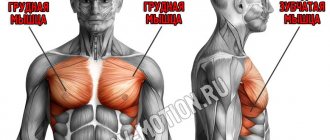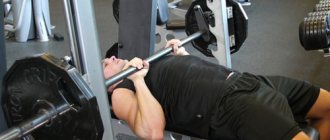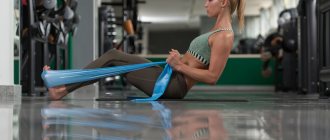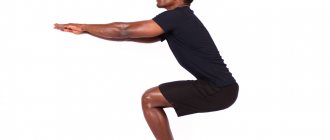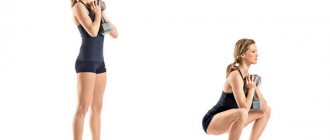28 June 2021 Admin Home page » Tips and tricks
Find out how to build broad shoulders as quickly as possible, with minimal risk of injury. Only proven advice from professionals!
Many gym goers use the rule, lift more and you will get bigger, these words have some truth, but they need to be used wisely. Dumb lifting of weights will give initial results, but then you will not get the long-awaited effect and your results will stall, plus you will get injured.
To do this, you need to connect your brains, use different training schemes, apply different degrees of load, and so on. We present to your attention 16 main rules for the correct development of shoulders, with minimal possibility of injury, remember them so that training your shoulders for weight will be successful.
It starts with the overhead press
Start working on your deltoids with a seated press while you are full of strength and energy; you can do it with both a barbell and dumbbells; it is better to alternate them, rather than focus on one of them. This basic exercise perfectly works all 3 areas of the deltoids, triceps and other supporting muscles; it is very important to work in the range of 6-12 repetitions, this is where muscle hypertrophy comes into play.
Do not try to do this exercise at the end of a workout, when the muscle fibers are working with the rest of their strength, you lift a small working weight, and you will not work the muscles well.
Goal: development of the posterior deltoid bundle
The rear delts tend to lag in both beginners and advanced bodybuilders. Simply put, they don't get the same stimulation as the front and middle deltoids, which are heavily worked in chest exercises and multi-joint shoulder movements.

The rear delts get an indirect load on back day, but still, too many lifters focus on working the “mirror” muscles.
If your rear delts are underdeveloped, simply follow this routine for 4-8 weeks, or alternate it with a more balanced shoulder routine.
Workout 5: Focus on the rear delts
- Seated dumbbell press – 4 sets of 8-10 reps (rest 2 minutes)
- Dumbbell flyes lying chest down on an incline bench – 4 sets of 8-10 reps (rest 60-90 seconds)
- Crossover raises from overhead blocks – 3 sets of 10 reps (rest 60-90 seconds)
- Peck Deck Raises – 3 sets of 10-12 reps (rest 60-90 seconds)
Do seated and standing presses
There is no fundamental difference between these 2 exercise options, but there is one significant difference.
When performed in a seated position, you work the shoulders more specifically, which is better for more targeted delt pumping, but it doesn't allow for the use of lower body strength. Therefore, you can handle the weight, much less, and reduce the number of repetitions.
If you use the standing option, this is called a military press, here you can work with heavier weights and increase the number of repetitions, due to the fact that the initial impulse of the movement comes from the lower part of the body, including the legs, abs, and lower back in the work. It is recommended to use an athletic belt in heavy approaches so as not to damage the lower back. Precisely because more weight is taken, more muscles are involved in the work and the mass of not only the shoulders, but also the whole body increases.
Alternate these exercises, this will give impetus to the development of large deltoids.
What safety precautions must be taken during training?
The risks of injury during deltoids training are high. This is due to the structure of the shoulder joint, consisting of three beams, its direct involvement when performing presses and deadlifts, as well as rotation through 180 degrees. And if the athlete does not know or ignores the safety rules, then any exercise on the delta becomes a potentially dangerous threat.
You can protect yourself by strictly following all recommendations to reduce the risk of injury:
- Every delt exercise should always begin with a high-quality and good warm-up;
- when starting a working approach, you must definitely do a warm-up set;
- do not take maximum weights and work with a reliable safety net - a partner on the last approaches;
It is not recommended to do exercises that involve movement that is unnatural for the shoulder joint. A striking example is the overhead barbell press. If there is a need for such exercises, you should work only with a limited range of motion.
Make sure your shoulders develop evenly
Uneven development of the shoulders is not only noticeable and unsightly, but can also be the cause of a rotator cuff injury.
Guys who often train their chest and do other exercises to develop it have larger front deltoids than their side ones. At the same time, they do not pay special attention to the sitting press, because the main thing is to have a beautiful, powerful chest.
Because of this, the shoulders look underdeveloped in appearance, the chest is large, and the shoulders are not wide enough. Not liking traction exercises for the back leaves the rear part of the deltas out of work.
All this leads to weakness of the shoulder joints, which may not withstand the load of strength exercises, as other muscles grow and require more and more load.
The first exercise for the deltas is the bench press, and the second should go to the lagging part of the shoulder, and then to the more developed area.
Shoulder weight training
The shoulders are the most widely used muscles in the upper body, in my opinion. They take part in almost every exercise that comes your way. The shoulders rotate almost 360 degrees, ignoring the fact that broad, massive shoulders look impressive on stage and even better in the eyes of a lady.
The shoulders are an important muscle, so why are so many people unable to develop broad, massive shoulders? Continue reading and we will find the answer to the question of how to build broad shoulders.
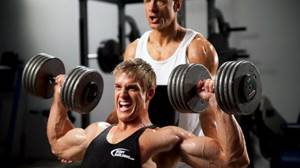
In the paragraph below I will describe the anatomy of the shoulder, its functions, anatomical structure and location on the body, and several exercises for different bundles of deltoid muscles. Finally - what you've been waiting for - I'll add five shoulder workout programs to help turn your baseball-sized delts into huge bowling balls.
Take care of your rotator cuff
It is responsible for the circular movements of the arms in the shoulders, so neglecting it can lead to negative consequences. Few train it, it doesn’t matter how much you pump it, it’s not visible, but its main task is not to show off externally, but to balance the shoulder joint.
Rotator cuff - consists of 4 muscles, always before training your shoulders, take small dumbbells in your hands and perform circular movements with your arms, slightly bending your elbows. Perform 10-15 rotations forward and then backward, repeat this for 2-3 approaches.
Lesson program

Standard shoulder training programs are designed for those who have been training for more than a year, but are not suitable for beginners. It includes basic (military standing press; Arnold press; barbell row to the chin) and isolating exercises - swings with dumbbells.
In one workout, perform 2-3 basic and 2-4 isolation exercises (3-4 sets/8-12 repetitions), including each swing variation. For beginners, until their body gets stronger, one or two basic exercises are enough. But reducing the load by reducing sets or repetitions is not worth it: a “cut-down” workout will increase shoulder strength, but muscle mass will not grow.
Presses: military and Arnold
Presses are considered basic multi-joint exercises: they load all the largest muscle groups. So, the Arnold press uses all the deltoids and shoulder rotators, while the military press focuses on the front and partly the middle deltoids. At the same time, presses strengthen your arms, improve your posture, and strengthen your abs.
- Army press. Grab the barbell shoulder-width apart, bring it under your chest, tense your abs and back, and remove the barbell from the support. Taking a step back, take the starting position: your back is straight, your knees are bent. Press the weight up without touching your chest. When you finish the set, lower the barbell to your chest, step forward and return it to the supports.
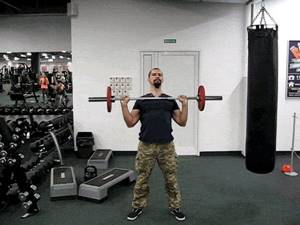
- Arnold press. Sit on a bench with a hard back, press your back against it, place your feet firmly on the floor, raise your arms with dumbbells to neck level - this is the starting position. Turn your wrists towards your body and press the implements as high as possible, keep your head straight and look in front of you. Raising the weight to the top of your head, turn your palms outward: at the top point, your arms are fully straightened, palms facing forward. Return to the IP in reverse order.
Concentrate on the movements, pay attention to the stance. Move smoothly, without jerks or pauses. Incorrect body position, acceleration and deceleration of the rhythm transfer the weight of the burden to the spine and joints, which means that training becomes less effective and the risk of injury increases.
Lifting the bar
Raising (pulling, pulling) a barbell to the chin is a basic strength load for the middle and rear deltas; it also involves the trapezius, partly the biceps and triceps. The lift is done in the middle of the workout - after the bench press, but before the swings, it has a good effect on increasing the mass and volume of the shoulders.
- Stand in the starting position: feet shoulder-width apart, back straight with a physiological deflection in the lower back. Bend over and grab the barbell. As you straighten up, you will hold it with slightly bent arms just below your pelvis. On different days, alternate between a medium and wide straight grip (keep in mind that the narrower the grip, the less load the shoulders receive - the trapezius and biceps take on the load).
- With a powerful effort, but without jerking, pull the projectile up as high as possible - your elbows go up and to the sides, the bar slides along the body. Lower your shoulders, but don't tense them, otherwise you'll transfer weight from your deltoids to your trapezius. At the top point, count to two and lower the barbell - slower than you raised it.
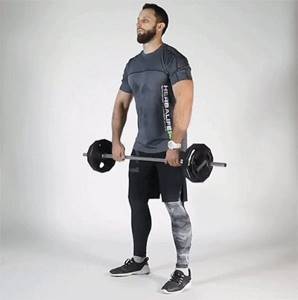
Beginners can perform 3-4 sets of 6-12 repetitions, eventually increasing their number to 20-30 repetitions, or replace them with dumbbell lifts. For beginners in bodybuilding who are not confident in themselves and feel the risk of injury, it is better to train not with free weights, but on machines: a Smith machine or a crossover.
Mahi
Dumbbell swings are classified as isolated (targeted) exercises; they allow you to refine “lagging” muscle bundles after basic training. Swings are performed with light weight and carefully tuning each phase of the movement. To train the shoulder girdle, three types of swings are used:
- In front of you (for front beams). Take dumbbells, bend your elbows and lift the weight to shoulder level or higher. Keep your back straight, do not sway; the arms remain in their original position: do not bend them more, but do not straighten them or spread them to the sides. If you cannot perform the exercises cleanly, change the dumbbells to lighter ones; to increase the load, you can lift the plate from the barbell.
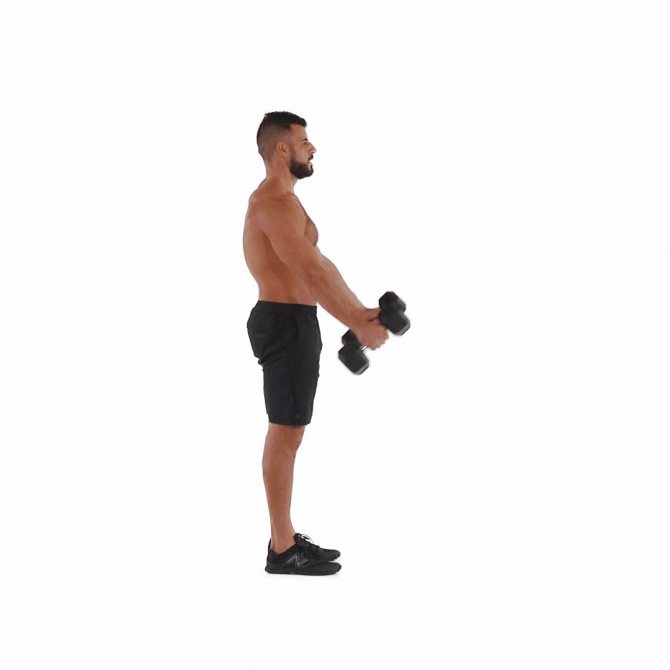
- Through the sides (for middle deltas). Stand straight, feet shoulder-width apart, toes slightly pointed out. Take the dumbbells in your hands with a medium grip, take a deep breath and, while holding your breath, begin swinging - your arms are slightly bent at the elbows, your body is motionless. Raise the weight to shoulder level, but not higher, otherwise the weight will shift to the trapezius.
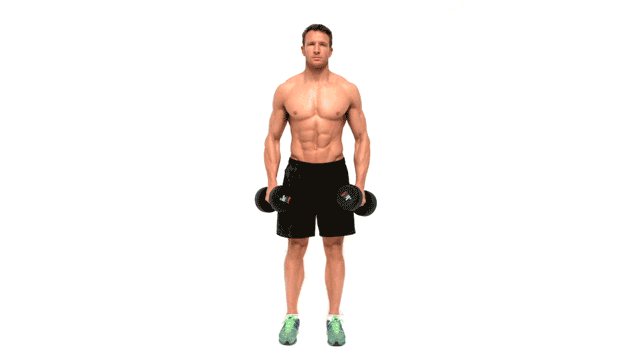
- Through the sides in an inclination (for the rear deltas). Take light dumbbells and bend towards the floor, rounding your back. Bend your arms slightly and lift them up, trying to get your elbows behind your back as far as possible. At the moment of maximum muscle tension, count to two and return to the IP.
Bent over dumbbell swings are done at the end of the session. The working weight for beginner men is 4–5 kg, and for girls – 1.5–2 kg, but to fully work out the deltoids, what is more important is not the weight, but the number of repetitions and quality of execution. It is preferable to do more repetitions with light weights than lift heavy ones and risk damaging your joints.
React instantly to pain
Sharp pain during exercise is bad pain and is nothing like muscle pain after exercise. If it occurs, immediately finish the exercise and move on to another, similar one.
For example, replacing a barbell bench press with a dumbbell press puts your shoulders in a more natural position, does not break them out as much and is less traumatic, although it does not allow you to take on such a large working weight.
At the first manifestation of pain, do not kill the muscles by clenching your teeth, immediately apply measures - massage, ointments, ice application, otherwise you will be treated by doctors and severe inflammation of the shoulder cuff will leave you behind training for a long time.
Train your shoulders in a variety of ways
Shoulder mass training requires variety; don’t get stuck on the same exercises and don’t perform exercises with the same weight. As muscles adapt to the load, they respond less over time and muscle growth slows down.
Therefore, do different exercises, alternate load phases from heavy for 6 repetitions, to medium for 8-10 repetitions and light for 12-14 repetitions. Change the angles of inclination, body positions, use dumbbells, barbells, exercise machines and crossovers, you can see the full list of exercises here.
Shocking training for deltoids with drop sets and supersets
Requires a preliminary warm-up, which takes at least ten minutes. It consists of working with small weights, rotating the body and arms, as well as other warm-up movements.
When the warm-up part is completed, move on to the main part:
Block one
- Standing barbell press (2 warm-up + 3 working sets of 10 reps);
- Wide-grip barbell rows to the chin (2 warm-up + 3 working sets of 10 reps).
After completing these exercises, they move on to supersets aimed at working the rear and anterior deltas.
Block two
- Seated dumbbell press + bent over dumbbell swing (3 supersets of 8-10 repetitions in each approach) – rest between supersets no more than two minutes, and a pause between sets no more than 20 seconds. Also add a few minutes of rest before drop sets.
These exercises pretty much exhaust the rear and front deltoids. To completely complete the work on the shoulders, all that remains is to work on the middle ones, which drop sets allow you to do.
Block three
- Standing dumbbell lateral raises (3 regular dropsets with the weights dropped by 50% in the second approach, 10 reps in each dropset series).
Drop sets are done according to the following scheme: first, they take dumbbells of the athlete’s usual working weight, and after 10 repetitions they immediately switch to weights that are 2 times lighter in weight, performing the same number of repetitions.
With this training program, it is guaranteed that the deltoid muscles will receive a powerful impetus for further growth. Shock training should not be performed in conjunction with exercises for other muscle groups, since the load on the nervous system is already very high. If the exercise is not completely exhausting, then it is permissible to add 2 repetitions or do several approaches to one of the exercises.

